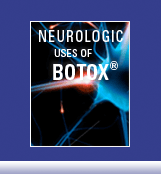![]()
 |
|
Childhood and Pediatric Migriaines
It is clear that childhood and pediatric migraine do not get sufficient notice from pediatricians. If a child is missing school or social events because of recurrent headaches, then these should be addressed. There is a general belief that migraine headaches in children are rare, but in reality they are not. Unfortunately in many cases, even when migraine headaches in children are recognized, they are commonly undertreated in the same manner as adult migraine headaches.
Childhood migraines typically occur in a setting where another member of the family has migraines. As a rule of thumb, 75% of children with migraine headaches have family members who also have them. Conversely, if one parent has migraine headaches there is approximately a 50% chance their children will also have them. The percentage is higher if the father is the parent with migraines than if the mother is the parent with migraines. If both parents have migraine headaches then there is a 66% chance that their children will have migraines as well.
One population study by Abu-Arefeh (BMJ 1994; 309; 765-9) demonstrated the migraine incidence in school children between the age of 5-15 was 10.6%. The incidence was higher after age 10, peaked at 27% in girls at age 14 and peaked at 20% in boys at age 12.
The International Headache Society (I.H.S.) {Cephalgia 2004;24 (Suppl 1)} criteria for migraine headaches include a notice that childhood migraines may last as short as one hour. In addition they are commonly bilateral. Photophobia and phonophobia may be inferred from the child’s behavior. In addition, occipital pain in children is rare and usually leads to further physician evaluation.
Head to head studies between ibuprofen and tylenol shows superiority of ibuprofen. Triptans are not currently FDA approved for use in children but despite this, neurologists commonly use them for refractory cases. There are also no preventative medications approved for children but the same medications used for adults are typically used in pediatrics.
Children sometimes get migraine precursors that include cyclic vomiting, cyclic abdominal pain, and cyclic vertigo. The discussion of childhood migraine headache diagnosis is beyond the scope of this web site.
Dr. Loftus commonly treats children at age 16 in his practice. Younger patients in Houston are referred to Diane Lebron at Texas Children’s Hospital but if there is a problem in seeing Dr. Lebron, Dr. Loftus will on occasion see a mature child as young as age 13. Younger children unable to see Dr. Lebron are referred to Dr. Linder in Dallas.



